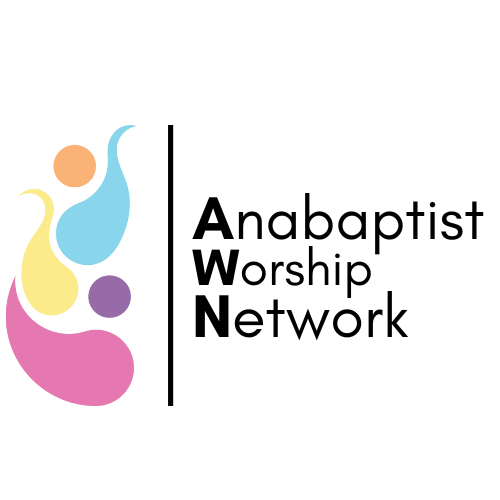White as Snow: Race and Church Music
By Katie Graber
During the process of compiling Hymnal: A Worship Book (1992), committee member Tony Brown wrote a report called “The Dark and the Light: In the Imagery of God.” In this report, Brown surveyed The Mennonite Hymnal (1969) for positive and negative imagery of light and darkness. He reported:
49 cases of “dark imagery used questionably”
7 cases of “darkness cast positively”
0 cases of light used questionably
33 cases of “light cast positively”
Brown argued that while light/dark imagery has some “foundational” and “natural” elements that we cannot deny, we must also be attuned to the harmful associations these oppositions can spin out. He gave these binaries as examples:
The first two (light/dark and sight/blindness) have a physical connection, as literal darkness causes literal loss of sight.
But why not emphasize the fact that bright light can also lead to loss of sight?
Though we cannot deny the “natural” connections, we can recognize our collective selective use of these poetic images in songs, visual depictions, prayers, and more. Consider the hymn line “He arose a victor from the dark domain,” where dark = death, hell, or the evil domain over which Christ has victory.
The metaphorical connections that grow beyond those first two binaries become more and more problematic. When “light” is associated with the top term in each of the following binaries, we can easily see how colonizers made misguided leaps between what they called “Darkest Africa” and its Black inhabitants needing education and religious conversion.
If we look at old hymns, we can see clear connections made between sin and blackness.
A little-known verse (verse 17!) of Charles Wesley’s 1739 “O For a Thousand Tongues to Sing” includes these absolutely offensive lines:
Awake from guilty Nature’s Sleep, and Christ shall give you Light, cast all your Sins into the Deep, and wash the Ethiop white.
Of course, light overcoming darkness is a Biblical image, and I am not (nor was Tony Brown) implying we need to remove it entirely. Instead, we must be aware of the balance and implications of our symbolism. There are many Biblical images and stories that we do not sing about regularly, or that we use and speak about carefully.
Tony Brown’s report inspired the writing of “Joyful is the Dark” by Brian Wren, which was included in Hymnal: A Worship Book and has been picked up by several ecumenical collections. That text uses powerful imagery of darkness: “Joyful is the dark coolness of the tomb,” and the bombastic “Joyful is the dark depth of love divine, roaring, looming thundercloud of glory!”
As well as “Joyful is the Dark,” Voices Together includes “Darkness is not Dark to You” by Sarah Kathleen Johnson, which also uses positive metaphors of darkness: “Darkness is the source of insight, darkness leads to what is true.” “Darkness is not Dark to You” also explores rarely-used metaphors of light’s potential negative qualities: “Light obscures the sacred secrets, light makes clear what should be blurred.”
In addition to Brown’s examples, the history of colonization and the study of Western music have developed additional related binaries. Consider the following that are metaphorically aligned with those binaries listed above:
Some interrelated, often subconscious associations have arisen from these binaries.
Western classical music is lauded for its complexity and therefore assumed to be refined, intellectual, and uplifting.
These values were explicitly stated in music criticism and music appreciation textbooks of the early 1900s, and the sentiment has often remained implicitly.
For over a century, African American and other popular music has been portrayed as uncultivated, overly simple, non-musical, or even dangerous.
In the past, jazz was denigrated as unmusical, and today some people say rap is not music because it “has no melody.” Popular music fads have been described as a “fever” in the past, or being “viral” now. Debates about dangerous lyrics ignore their potent cultural criticism.
We can see these biases in church music when Western hymns are valued while contemporary worship music is derided as simplistic both theologically and musically. The implied connections between simplicity, ignorance, and low art are all on the same side of the binaries listed above — along with barbaric and black. These criticisms of popular-style worship music are especially striking when compared to Taize music from France, which is specifically designed to be simple and repetitive (features that here do not receive the same critique).
Ideas like these, which are tangled up and often subconscious, can be called implicit bias. It is up to each individual and community to interrogate their own biases and make decisions that create a context of balance and inclusion. In the same way that I am not advocating “cancelling” darkness imagery, I am also not calling for all classically-inspired music to be banished from church.
Instead, we all need to be aware of how our musical choices work in these larger historical and metaphorical contexts.
You could begin by considering the following two questions:
Who is represented in your community’s choice of music?
Who is included and excluded in musical practices?
Considering how language of darkness and light impacts our perspectives and biases can lead us to more fully understand how our congregational worship can actively work to fight racism.
When the context of this language is understood and taken seriously, steps can be taken to ensure that our worship doesn’t suggest a meaning we do not support. By looking closely at this imagery, we are working to dismantle oppression and build a worship environment that respects the whole family of God.
Katie Graber is an ethnomusicologist who studies race and ethnicity in a variety of contexts including Mennonite music, American music, and European opera. She has taught classes on Western music history and world music, leads singing at her church in Columbus, Ohio, and chairs the Intercultural Worship committee for the Voices Together project.



